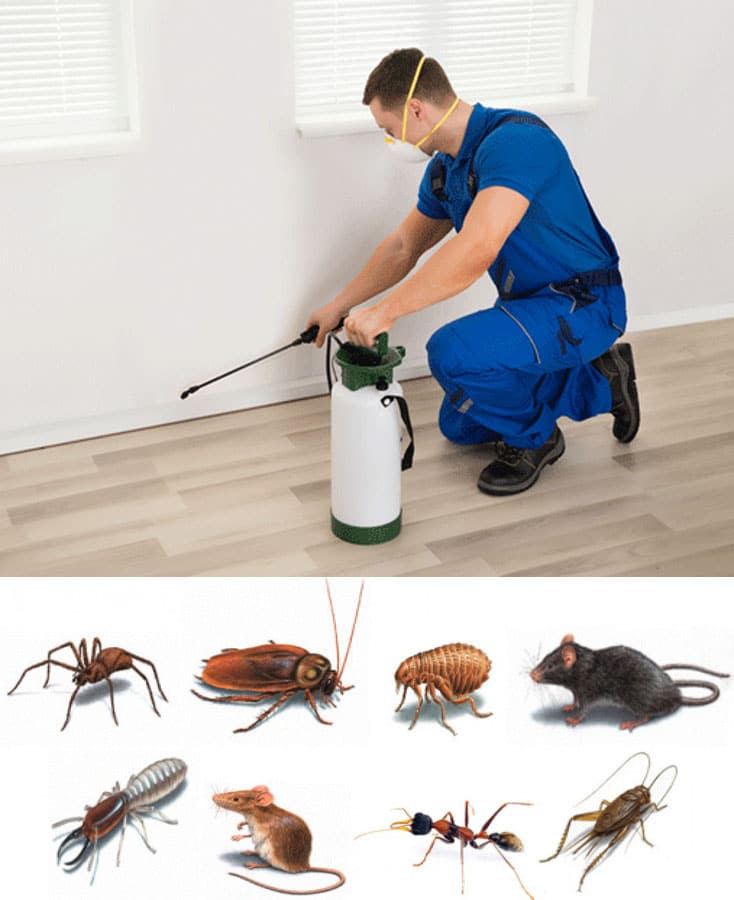A1 Bed Bug Exterminator Charlotte - Effective and Budget-friendly Services
A1 Bed Bug Exterminator Charlotte - Effective and Budget-friendly Services
Blog Article
Bed Insect Therapy Break Down: Comparing Chemical Vs. Non-Chemical Solutions
In the realm of bug control, especially when managing the consistent issue of bed insects, the option in between chemical and non-chemical therapy services can be a pivotal one. Both methods offer distinctive benefits and downsides, affecting elements such as efficiency, security factors to consider, and general cost. By analyzing the nuanced information of each approach, a more clear understanding of which path to go after in addressing a bed bug problem can be achieved.
Performance of Chemical Treatments
Chemical treatments for bed bug problems have actually been widely acknowledged for their potent and rapid efficacy in eradicating these pests. When considering the performance of chemical treatments, it is essential to recognize that they can offer a complete and fast solution to a bed insect trouble.
Additionally, chemical treatments have the advantage of supplying recurring impacts, indicating that they can remain to remove bed pests also after the preliminary application. This residual activity is specifically valuable in combating any type of potential re-infestations. In addition, the fast activity of chemical treatments can bring alleviation to individuals encountering serious bed insect infestations, permitting them to reclaim control of their living areas quickly.
Safety Worry About Chemical Solutions
When using chemical services for bed bug treatment is making sure the safety of residents and the setting,One essential aspect that needs cautious factor to consider. While chemical treatments can be effective in eradicating bed insects, they might pose dangers if not managed effectively. One of the main security interest in chemical solutions is the possible injury they can trigger to human wellness. Direct exposure to certain chemicals utilized in bed pest treatments can cause respiratory system concerns, skin irritation, or various other negative responses, specifically in individuals with pre-existing problems or level of sensitivities. In addition, inappropriate application or dose of chemical pesticides can lead to toxic residues remaining in the treated area, positioning long-term health and wellness dangers to owners.
Additionally, the ecological effect of chemical remedies is another significant factor to consider. Some chemicals utilized in bed insect treatments may be harmful to beneficial pests, wildlife, and environments if they leach into the dirt or water systems. It is necessary to use chemical therapies carefully, following safety guidelines, and thinking about less hazardous options to mitigate these threats and guarantee the safe and effective monitoring of bed bug problems.
Benefits of Non-Chemical Strategies
Taking into consideration the potential security worries and environmental influence associated with chemical solutions for bed insect treatment, discovering non-chemical methods presents an appealing alternative with numerous distinctive benefits. Non-chemical approaches offer a more secure option for households, specifically those with kids, pet dogs, or individuals delicate to harsh chemicals. These strategies remove Your Domain Name the threats of exposure to hazardous materials, decreasing the potential for damaging health impacts. In addition, non-chemical treatments are eco-friendly, as they do not add to air or water contamination, making them a lasting selection for pest control.
In addition, non-chemical options can be reliable in targeting bed insects, including hard-to-reach areas where chemical therapies might not penetrate - A1 exterminators charlotte nc. Techniques such as heat therapy, vacuuming, heavy steam cleaning, and cushion coverings supply extensive removal without the usage of dangerous chemicals.
Limitations of Non-Chemical Treatments

In addition, non-chemical treatments typically call for several applications to accomplish effective eradication. This can be time-consuming and may not constantly ensure total removal of all bed pests and their eggs, particularly in surprise or hard-to-reach places.
Moreover, the success of non-chemical treatments heavily relies upon correct implementation and thoroughness, which can be challenging for people without professional knowledge. Insufficient application of non-chemical techniques might result in incomplete eradication, resulting in consistent invasions and the demand for additional therapies.
Therefore, while non-chemical important source treatments have their advantages, it is important to acknowledge these constraints and consider them when identifying the most efficient method for handling bed bug infestations.
Cost Contrast: Chemical Vs. Non-Chemical Options
Offered the constraints linked with non-chemical therapies, an important aspect to evaluate in the context of bed insect administration is the expense comparison in between chemical and non-chemical alternatives. Chemical therapies usually entail the application of insecticides by professionals, which can range from $250 to $900 per area, depending upon the seriousness of the invasion and the size of the location to be treated. In comparison, non-chemical treatments like warmth therapy or vapor can be a lot more costly, with costs varying from $1,000 to $6,000 for a whole home. While the first expense of chemical treatments might appear lower, numerous therapies may be called for to totally eradicate the invasion, possibly increasing the general price. On the various other hand, non-chemical options may give a more eco-friendly and lasting solution, although they can be cost-prohibitive for some individuals. Eventually, when taking into consideration the expense of bed pest therapy options, it is essential to weigh the in advance expenses against the performance and lasting sustainability of the selected approach.
Verdict

Taking into consideration the possible safety and security worries and environmental influence connected with chemical services for bed insect treatment, discovering non-chemical techniques presents an encouraging option with several distinct advantages.Offered the restrictions associated with non-chemical therapies, an essential aspect to assess in the context of bed bug management is the price comparison in between chemical and non-chemical options. In comparison, non-chemical treatments like warmth treatment or heavy steam can be a lot more costly, with costs ranging from $1,000 to $6,000 for a whole home. While the initial price of chemical treatments might appear lower, multiple therapies may be called for to fully remove the infestation, possibly increasing the general cost.In final thought, when contrasting chemical and non-chemical bed bug therapy options, it is important to consider effectiveness, safety, advantages, limitations, and price.
Report this page